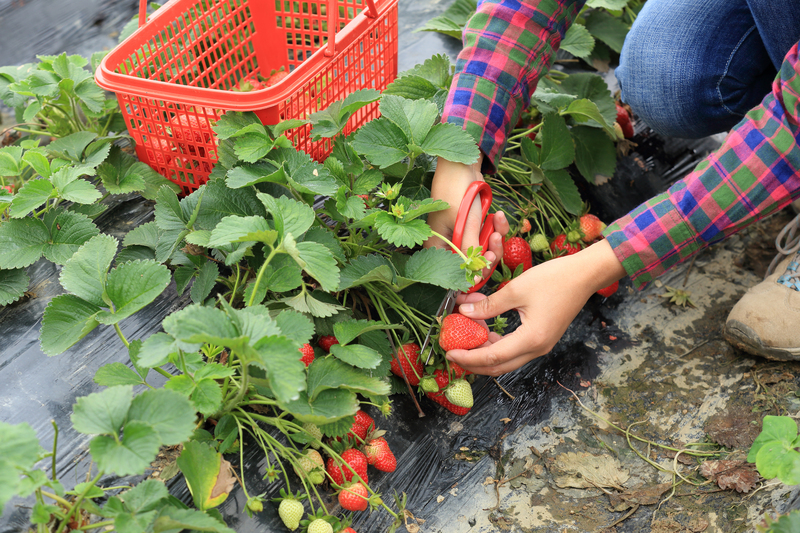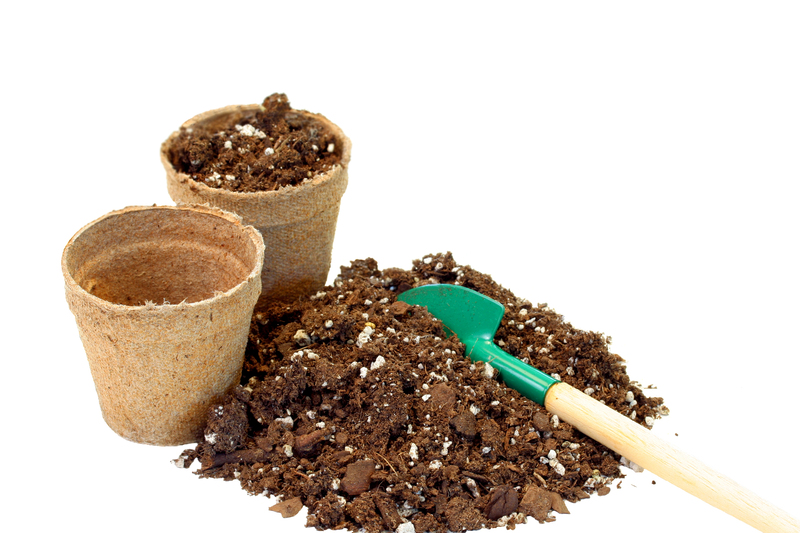Protect Your Garden: Creative Solutions for Severe Weather
Posted on 28/05/2025
Protect Your Garden: Creative Solutions for Severe Weather
Gardening can be one of life's great joys, offering relaxation, exercise, and a beautiful, productive natural space. But even the most carefully tended garden is at the mercy of severe weather events. Whether it's a torrential downpour, extreme heat, hailstorms, strong winds, or sudden cold snaps, unprepared gardens can suffer extensive damage. In this comprehensive guide, we'll explore innovative and creative solutions to protect your garden, ensuring its resilience, beauty, and productivity--no matter what mother nature throws your way.

Understanding Severe Weather Threats for Gardens
Severe weather can take many forms, each posing its own set of challenges to your outdoor oasis. By knowing what to expect and when, you can develop a comprehensive protection plan tailored to your location and climate.
Types of Severe Weather and Their Impact on Your Garden
- Heavy rain and flooding: Excess water can cause root rot, wash away soil nutrients, and lead to plant disease.
- Strong winds: Wind can snap plant stems, uproot young trees, and shred leaves.
- Hailstorms: Hail can pummel plant foliage, bruise fruits, and damage delicate seedlings.
- Heatwaves: Prolonged heat drains soil moisture, stresses plants, and can lead to sunburned leaves.
- Frost and freezing conditions: Unexpected cold can kill tender plants and damage buds, leading to loss of crops and flowers.
Protecting your garden from severe weather involves preparation, smart plant selection, construction of physical barriers, and regular maintenance. Below, we'll walk through creative, proven solutions you can put into action right now.
Creative Solutions for Protecting Your Garden from Severe Weather
1. Strategic Garden Design for Weather Resilience
A weather-resistant garden starts with a savvy layout. Smart design can mitigate damage from even the most extreme conditions:
- Windbreaks: Plant rows of hardy shrubs or install fencing to act as natural wind barriers. Bamboo, privet, and arborvitae are ideal choices for windbreaks.
- Raised beds: Elevating your garden helps prevent waterlogging during heavy rains and improves drainage.
- Mulch pathways: Lay thick mulch in walkways to control runoff, prevent soil erosion, and keep feet dry.
- Zoning: Group plants based on their water and sun needs, shielding delicate plants with taller, hardier species.
2. Temporary and Permanent Covers
Covers are one of the most effective ways to protect plants during storms or temperature extremes:
- Row covers and cloches: Lightweight fabric covers (floating row covers) can be draped over plants for frost and insect protection. Plastic or glass cloches shield individual plants from wind and cold.
- Shade cloth: Install during summer to reduce sun intensity and protect against heatwaves.
- Hail netting: Sturdy mesh sheets intercept hailstones before they damage your crops.
- Pop-up greenhouses: Temporary, portable greenhouses offer complete weather protection for smaller beds or valuable specimens.
3. Soil Management for Weather Extremes
Healthy soil can make your garden more resilient to severe weather. Here's how to keep your soil in peak condition:
- Add organic matter: Compost, well-rotted manure, or leaf mold increase soil aeration and moisture retention, buffering against both drought and flooding.
- Mulching: Apply a thick layer of organic mulch (like straw, bark, or wood chips) to stabilize soil temperature, suppress weeds, and slow evaporation.
- Install drainage solutions: French drains, berms, or swales direct excess water away from beds, reducing the risk of root rot during storms.
4. Water Management: Protecting in Drought and Flood
Smart irrigation protects your garden in both very wet and very dry conditions:
- Soaker hoses and drip irrigation: Deliver water directly to roots, minimizing evaporation and reducing disease risk from wet foliage.
- Rain barrels: Collect runoff from your roof for supplemental watering during dry spells, making your garden more sustainable.
- Mulch, again: Besides stabilizing temperatures, mulch helps retain precious soil moisture in heatwaves.
5. Plant Selection: Choosing Weather-Hardy Varieties
Plant selection is crucial in weatherproofing your garden. Opt for varieties that are well-suited to your climate and resistant to diseases and weather extremes.
- Native plants: These are already adapted to your region's climatic challenges, requiring less fuss when weather turns nasty.
- Resistant cultivars: Many modern hybrids are bred for their ability to withstand extremes of heat, cold, or drought.
- Diversity is strength: Grow a variety of species to minimize losses if one group is particularly affected by a weather event.
6. Wind and Hail Defenses
High winds and hail can decimate a garden in minutes, but creative structural solutions help limit the damage:
- Sturdy staking and trellising: Provide robust support for tall, top-heavy, or vining plants to prevent wind damage.
- Protective fencing: Solid wood, lattice, or mesh fencing breaks wind and reduces flying debris impact.
- Portable plant protection: Place moveable container plants or patio pots in sheltered spots when storms are forecast.
- Temporary covers and shields: Quick-drape nets or tarps during hailstorms can save fragile vegetable beds or prized flowers.
7. Frost Protection: Extending Your Growing Season
Unexpected frost can be devastating, especially in spring and fall. Try these creative remedies to keep the cold at bay:
- Floating row covers: Lightweight fabric "blankets" absorb and trap heat around plants, raising nighttime temps several degrees.
- Water walls: Circular water-filled plastic forms absorb daytime heat and radiate it back at night.
- Cold frames: Simple glass or plastic-topped boxes provide a miniature greenhouse effect, perfect for seedlings and cold-sensitive plants.
- Old blankets or sheets: For urgent, overnight protection, simple fabric covers can make all the difference.
Garden Maintenance Tips To Enhance Weather Resistance
Proactive Care Makes a Difference
Regular attention strengthens your plants, making them less vulnerable to weather extremes:
- Inspect regularly: Spot and address early signs of stress, disease, or pest infestation before weather compounds the problem.
- Prune wisely: Remove weak, dead, or crossing branches to reduce wind drag and potential breakage.
- Feed and water appropriately: Strong, well-nourished plants recover faster from weather stress.
- Reinforce supports: Check all plant supports ahead of stormy seasons to keep them strong and stable.
Emergency Preparedness for the Garden
Fast action can sometimes make all the difference when extreme weather approaches:
- Monitor weather forecasts: Stay updated and be ready to deploy covers or move potted plants quickly.
- Have materials on hand: Keep extra mulch, fabric covers, stakes, and repair supplies handy for rapid response.
- Plan for pests: Storms can displace insects and disease. Inspect plants after storms and treat problems promptly.
Innovative Gardening Technologies for Severe Weather
Modern Tools To Give You the Weather Edge
Advances in technology have brought new ways to protect your garden against climate challenges:
- Smart sensors: Devices can monitor soil moisture, humidity, and temperature, alerting you when intervention is needed to protect your plants.
- Automated irrigation: Programmable systems save water and minimize stress, particularly during drought.
- Weather Apps: Dedicated gardening apps provide real-time alerts and tips tailored to your local area and forecasted weather.
- UV-protective films: Specialized greenhouse films now block harmful rays, reduce heat buildup, and soften harsh light.

Case Studies: Gardens That Withstood the Storm
Community Garden Triumph Over Flooding
In 2023, a neighborhood garden in Houston, Texas, faced historic rainfall and widespread flooding. Thanks to raised beds, heavy mulching, and newly dug swales, most of the crops survived unharmed, while other nearby gardens were decimated. The garden's resilience was credited to careful design and readiness for severe weather emergencies.
Personal Victory Against a Hailstorm
One Midwest homeowner lost two rows of tomatoes to a freak hailstorm--until she threw over a lightweight mesh net. The netting broke up the hailstones, which spared new seedlings and didn't require expensive materials or permanent structures.
Conclusion: Prepare, Protect, and Prosper in Any Weather
Severe weather is a fact of life, but it doesn't have to mean disaster for your cherished garden. By combining strategic design, resilient plant choices, timely maintenance, and the latest gardening technologies, you can minimize damage and continue to enjoy blossoms, vegetables, and green space--regardless of what the forecast says.
Remember: The best time to prepare is before bad weather arrives. Use these creative, practical strategies to protect your garden from severe weather. With solid planning, you'll see your garden thrive through every storm and season for years to come.
- Start small: Implement just a few solutions first, then build as your weather needs become clearer.
- Stay flexible: Severe weather patterns are unpredictable; adapt strategies as you learn what works best for your garden.
- Share knowledge: Connect with neighbors and gardening groups for more ideas and communal weather defense.
By protecting your garden from severe weather with creativity and determination, your love for gardening will withstand even nature's wildest moods.

